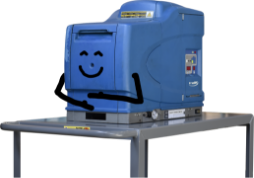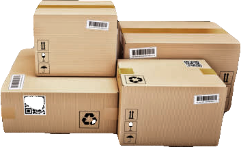Stuck On Sustainability Committee Tackles Water Conservation
This summer Chicago Glue and Machine formed the Stuck On Sustainability (SOS) and In-GLUE-sivity Committees to help further our Environmental, Social and Governance (ESG) efforts. One of the first initiatives the SOS Committee tackled was educating the CGM team on water conservation and looking for ways we could reduce our water consumption at the office and at home.
The Startling Facts
More than 70% of the world’s population goes without clean water. Most of us have the good fortune of simply turning on the tap to access clean water whenever we want. That may not always be the case. A report published by Bank of America states that half of the world’s population will be living in water-stressed areas by 2025. 2025 folks! That’s less than three years away.
Alarmingly, an article on Earth.org names the United States as a country currently experiencing water scarcity. While the World Resources Institute categorizes our country’s stress level as low-medium as a whole, there are significant regional differences.
Lake Mead and Lake Powell, reservoirs of the Colorado River Basin are both below 30% full which has led to water restrictions in the Western United States. These restrictions affect almost 40 million people in seven states and Mexico that rely on the Colorado River Basin for potable water.
Sobering statistics indeed, which got us thinking; what can we do to reduce our own water consumption? As the saying goes, think globally and act locally!
Reducing our Waste Water
The first step in identifying ways to reduce our water consumption is to understand current usage. According to the DuPage Water Commission, water usage is broken down as follows:
- 40% is used outdoors for landscaping and cleaning
- 30% is flushed down the toilet
- 19% goes down the drain during showers and baths
- 10% is used for washing our clothes and dishes
- 1% is used for cooking and drinking
After doing some additional research, the SOS committee discovered that a trillion (that’s trillion with a T!) gallons of water are wasted each year from household leaks we aren’t aware of, including toilets.
Working with SCARCE, an environmental education non-profit dedicated to creating sustainable communities, we learned about an easy way to test our toilets for leaks using drops of food coloring.
The CGM team tested a total of 53 toilets in our offices and homes and identified and fixed five that had leaks. Based on the information provided by SCARCE these medium leaks wasted 200 – 250 gallons of water per day, which equates to about $3.30 per day. We’ll do the math for you, over the course of a year that’s 365,000 wasted gallons of water equivalent to over $6,000.
These leaks can be fixed by simply replacing your flapper or float assembly.
Small Changes Can Make a Big Impact
Back to acting locally, whether we live in water-stressed areas or not, we need to be conscious of our usage and begin saving.
Here are some simple but efficient and effective ways that you can conserve water in your daily life:
- Always turn off the tap while brushing your teeth
- Collect rainwater and use it to wash your car or water your plants
- Take shorter showers
- Fix leaky faucets
Don’t underestimate the power you have. If we are all mindful of our water consumption and make an effort to change our behavior, we can make a meaningful impact. Saving water means saving energy, reducing environmental pollutants, and saving money. A win, win, win scenario.












